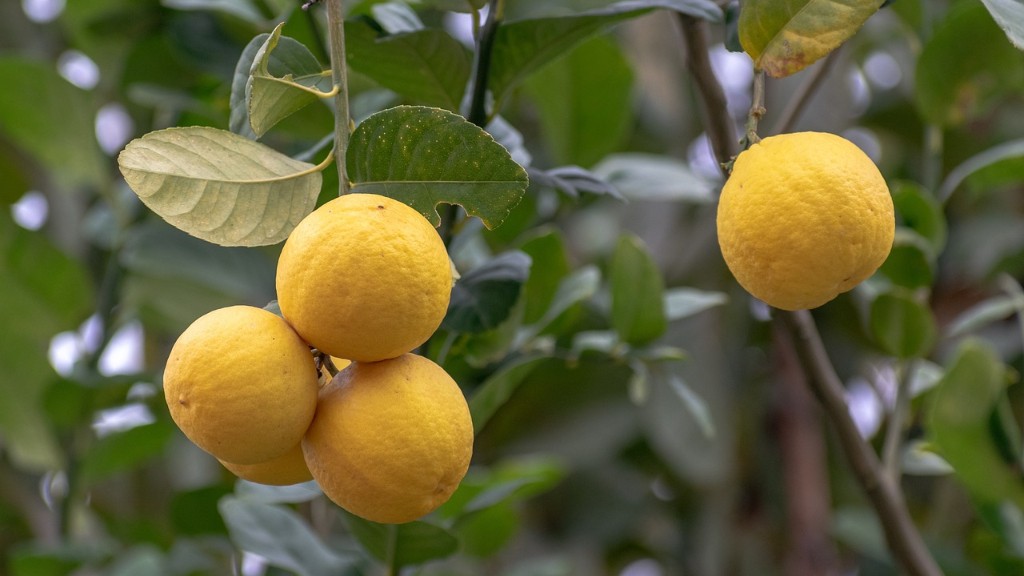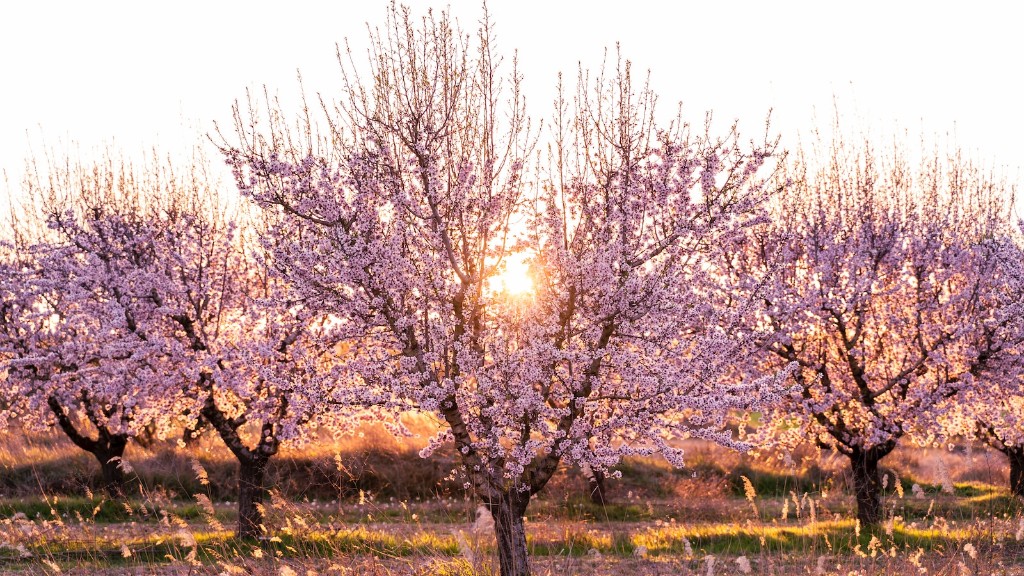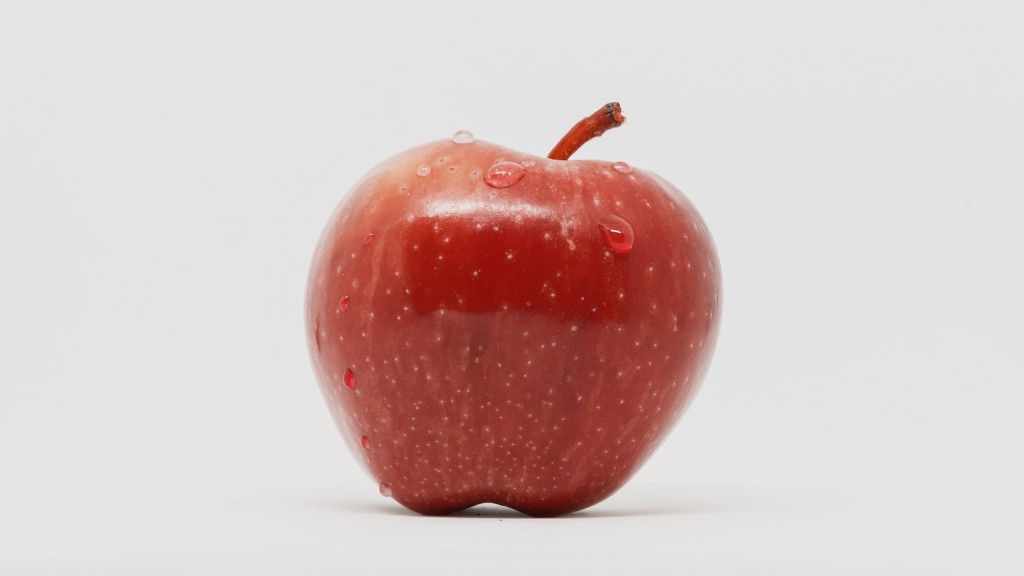Growing an avocado tree from a pit is a popular and fun project to add some greenery to a backyard or apartment. Avocado pits are large, oval-shaped and have large seeds inside. People have been able to successfully grow avocado trees from these pits, with some preparation and patience.
Avocados are perennial evergreens which grow up to 30 to 40 feet in height in ideal conditions. While it would take many years to reach that size, sprouting an avocado tree from a pit takes only a few simple steps. Firstly, you will need to clean the pit thoroughly. This can be done by washing it with a gentle detergent and rinsing it off with water. Once the pit is sufficiently clean, it needs to be dried for a few days so its skin becomes hard.
The next step is to suspend the pit over water. To do this, insert three or four toothpicks into the pit at the bottom. Your goal should be to make the pit stand upright while leaving the bottom of the pit submerged in the water. Place the pit in a sunny spot and change the water every few days until the pit starts to crack, revealing a baby avocado tree inside.
At this point, you have to plant the pit into well-draining soil. A potting soil will work best as it is light and pre-mixed to provide the right balance of nutrients. Before planting, be sure to moisten the soil; Avocados require regular watering for healthy growth. Once the baby tree has been planted and watered, it should start to grow.
The growth of an avocado tree from a pit varies from person to person and depends on how well you take care of your tree. Pruning may be necessary as the tree grows, as it helps promote fresh growth and keeps the tree looking neat. Fertilizer is also recommended to keep the tree healthy. With regular watering and care, your avocado tree should reach maturity in a few years.
Growing an avocado tree from a pit is not only a fun and rewarding project, it is also a great way to acquire fresh avocados. With the right care, your avocado tree can bear fruit in a few years and provide you with delicious avocados for years to come.
Benefits of Growing an Avocado Tree
Growing an avocado tree can have numerous benefits. For starters, it can add visual interest to any space and bring a vibrant living element to a home or garden. It can also provide shade, depending on its size, and the leaves can be used to supplement diets or as a source of medicine.
Moreover, growing a tree from a pit can be much cheaper than purchasing one from a nursery. There are also many resources available to help with the process, such as online guides and tutorials, ensuring that anyone can start growing a tree in no time.
Avocado trees need relatively little maintenance, making them a great option for busy gardeners. They do not require much pruning and can be effectively fertilized with compost or fertilizer tablets. Furthermore, they are less susceptible to diseases and pests, making them easy to take care of.
It is also possible to grow an avocado tree indoors. It can provide a unique decoration and add life to any room in the house. Plants require light to thrive, so an indoor tree will need to be placed next to a window or in a conservatory. With the right light and plenty of water, it should thrive.
Complementary Fruits to Avocados
Avocados are incredibly versatile and can be used in a variety of dishes. They are a great addition to salads and sandwiches, and their smoothness makes them suitable for dips, sauces and smoothies. They are also often used as a base for desserts and ice creams. Plus, they are not just great when eaten alone; they pair well with many other fruits.
For starters, mangoes and avocados have a similar creamy texture and sweet taste. They both work great in shakes and salads and together they can make a delicious guacamole. Mangoes are also known to contain vitamin A, C, E and B6, making them a great complement to the healthy fats in avocados.
Citrus fruits like oranges and grapefruits are also great additions to avocados. Their high fiber content helps to regulate blood sugar levels. Plus, their flavors contrast with the creamy texture of avocados, adding brightness to salads and sandwiches.
Finally, pineapples are another great companion for avocados. The sweet and tangy flavor of a pineapple is a perfect contrast to the buttery texture of an avocado. Additionally, pineapples contain antioxidants which can help to boost the immune system. Together, avocados and pineapples make a great tropical salad.
Common Uses for Avocado Trees
Avocado trees can be used in a variety of ways. Firstly, they can be used to provide a natural, evergreen backdrop to any outdoor garden. While they are slow-growing trees, they eventually become tall, providing ample shade and beauty to any landscape.
Plus, if the tree reaches the right maturity, you can use its fruit in a variety of dishes. Avocados have many nutritional benefits, such as healthy monounsaturated fats, potassium, and vitamin E. They are also full of antioxidants and provide essential nutrients, keeping you healthy and strong.
Furthermore, the leaves of the tree can also be used for medicinal purposes. When crushed, the leaves release an oil which can be used as a topical treatment for certain conditions such as eczema and minor wounds. Alternatively, the leaves can be boiled, filtered and the liquid consumed to treat coughs, colds and headaches.
Moreover, the wood from a mature avocado tree can be used for various DIY projects and furniture. The wood is strong and durable and can be used to make a variety of different items such as planters, tables, chairs and more.
Care Tips for Avocado Trees
Care and maintenance are important when it comes to growing an avocado tree. To keep your tree healthy, be sure to water it regularly and check the soil to ensure that it remains moist. Overwatering can lead to root rot, so make sure the soil is not waterlogged.
Fertilizing is also important; while avocado trees do not need to be fertilized often, a diluted fertilizer applied to the soil should provide all the nutrients needed for healthy growth. Additionally, pruning should also be done periodically to ensure that the tree maintains a healthy shape.
Finally, it is recommended to keep the area around the tree free of debris and weeds. Dried leaves, wood and other materials provide the perfect habitat for pests and diseases, so keeping the area clean is essential to preventing any problems.
Avocado Tree Problems
Avocado trees can be prone to certain issues, such as root rot and fungal diseases. Root rot is caused by overwatering, which can also weaken the tree and lead to other problems, such as yellowing of the leaves. This can be prevented by ensuring that the soil is allowed to dry out between waterings.
Fungal diseases can also be a problem; they occur when the fungus enters the plant’s tissue through a wound or crack. The most common fungal diseases are anthracnose and citrus canker. These can be prevented by avoiding direct contact with plants that are infected, ensuring that the area around the tree is clean, and by avoiding pruning during the rainy season.
Insects such as mealybugs and aphids can also be a problem. These can be controlled with insecticides, but it is important to follow the directions on the packaging and use only the recommended amounts.
Pests and Other Hazards
As with any plant, avocado trees can be susceptible to pests and other hazards. Birds can be a problem, as they can eat the fruit and damage the leaves and flowers. In addition to this, the flowers can be damaged by cold weather, so it is important to provide adequate protection during the winter.
Weeds can also be a problem; they can interfere with the tree’s ability to get the nutrients it needs. To control weed growth, it is recommended to use mulch or a ground cover around the tree. It is also important to check for pests regularly, as they can damage the tree’s leaves and deplete its nutrients.
Finally, it is important to be aware that avocado pits can be dangerous if ingested. In some cases, the seed can expand in the body and cause a blockage. As such, it is important to keep the pit away from young children and pets.




